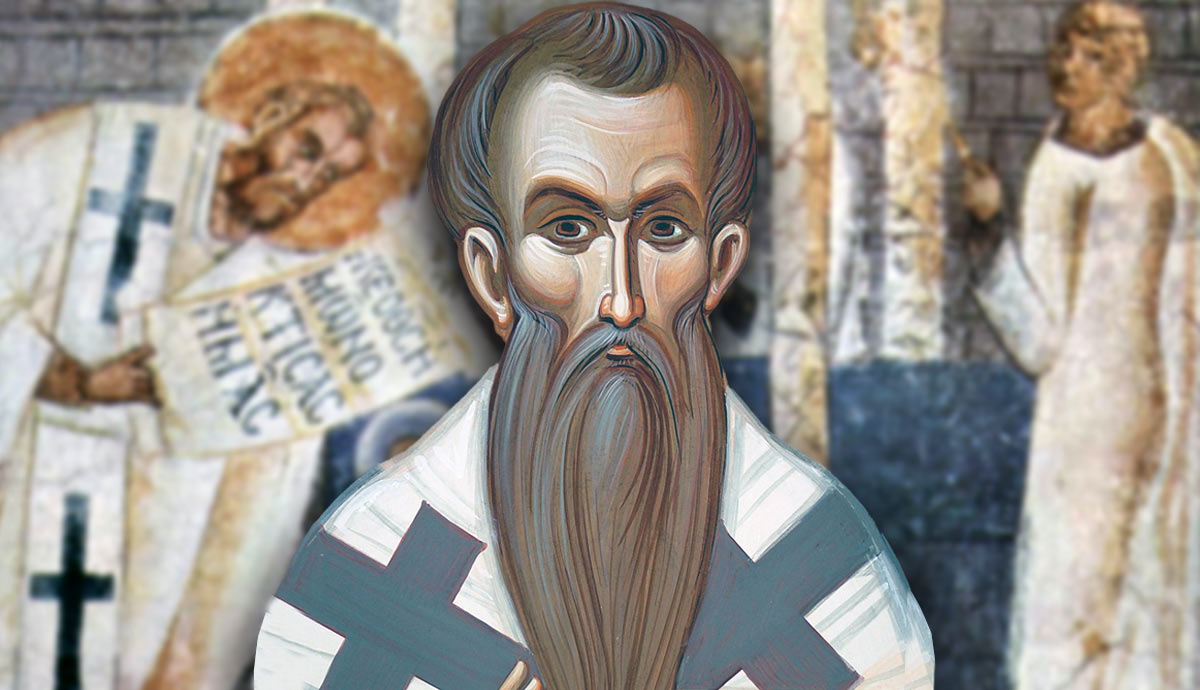
St Basil the Great was a Christian teacher, theologian, and writer who lived from 329-380 CE. His influence on church history through his theological arguments and teachings led to the establishment of much of standard Christian theology for the centuries to come. He is also the brother of Gregory of Nyssa and close friend of Gregory of Nazianzus, and brother and relation to various famous figures in early Christian history. In 370, after the death of Eusebius, he became Bishop of the church in Caesarea, one of the most important cities in early Christian history.
Saint Basil Taught Others About the Holy Spirit

Basil was significant in the development of the idea that the Holy Spirit is of the same substance as the Father and the son within the Trinity. In his work On the Holy Spirit, he argues that the Holy Spirit shared equally in the divine nature with the Father and the Son, and was not a separate divine essence. These arguments were critical in the eventual formation of the Nicene Creed in 325 (and its later revision in 381), and thus establishing the orthodox, or standard, of understanding the Trinity within the Christian Church.
Saint Basil and Monasticism

Basil was also a teacher and practitioner of what would become monasticism within the Christian Church. Already, there had been Christians who practiced an extreme ascetic lifestyle, separating themselves from the rest of the church and living alone with few possessions as hermits. Basil believed that, while a simple lifestyle with few possessions was admirable, the abilities and talents people had still needed to be used in Christian service rather than in a reclusive life with no contact. Before Basil, a monastic lifestyle had some conflict with the rest of the church, but his ideas brought the two together. He instructed that monastic orders should live in a community of love, prayer, and service, but never established a specific monastic order with specific rules.
The Council of Constantinople

The Council of Nicaea in 325 helped set the stage for a later council at Constantinople in 380. At Nicaea, the church generally rejected Arianism – the idea that Jesus was a created figure and not equal to God, and established the idea that Jesus was equal to God as orthodoxy. In 381, Emperor Theodosius called a second council which affirmed the one at Nicaea, and recognized the Holy Spirit’s equality in the Godhead with the Father and the Son. Basil was instrumental in the council’s decision, and the Nicene Creed was confirmed at that point (though without the filioque, an issue that arose later).
Saint Basil’s Miracles

According to Eastern Orthodox teachings, sometime after the Council of Constantinople, Basil came into conflict over a church given to the Arians by the Emperor Valens. Basil confronted Valens regarding the matter, as it was taken away from orthodox believers, and was given permission to judge the matter by Valens. Basil had the doors of the church locked, sealed, and guarded, and challenged the Arians to pray regarding its reopening. When the prayers of the Arians were unable to release the church, Basil prayed and an earthquake opened the doors and broke the locks.
Saint Basil’s Legacy

While the precise date of his death is not officially known, January 1 is considered the date of Basil’s death. The Roman Catholic Church bestowed the title of Doctor of the Church upon Basil, and he is considered the Father of Eastern Monasticism. Saint Basil also earned various other honors throughout Christian history for his writings, works, and long-lasting influence.










